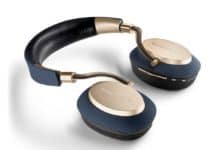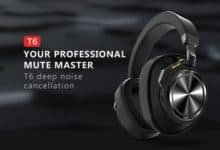What makes the headphones more comfortable?
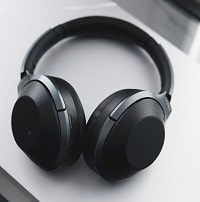 Audio quality is an inevitable factor while considering a headphone. But that is not all. Even the most quality headphones can become an annoyance if they are not comfortable enough. There is no prospect of taking pleasure in the best sounding headphones when you are forced to adjust and take frequent breaks every now and then.
Audio quality is an inevitable factor while considering a headphone. But that is not all. Even the most quality headphones can become an annoyance if they are not comfortable enough. There is no prospect of taking pleasure in the best sounding headphones when you are forced to adjust and take frequent breaks every now and then.
It is time that we consumers think beyond the obvious proponents of judging a product- its build and appearance. It is indeed immense distress that a majority of on- and over-ear headphones don’t come with the alternative of swappable tips for maximized satisfaction.
Just like everything else, the headphone comes with its nuances. They exhibit unique variations in detail. There are several aspects to be taken into deliberation while choosing a headphone. This guide hopes to make clear to you the probable choices.
Size of the Headphones
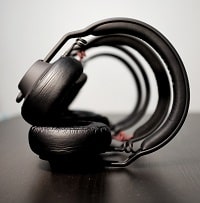 There are no hard and fast rules on the size of the headphones you must get. Big or small, you name it! The markers are all arms to make it available to you.
There are no hard and fast rules on the size of the headphones you must get. Big or small, you name it! The markers are all arms to make it available to you.
Problematically, not all producers opt for models that tender sufficient ear cup extension. Quite a lot of troubles take place if the cups end up undersized to correctly fit on or over your ears. Cups that cannot reach down adequately, result in pressing ears against the head. This continuous force on soft tissue areas quickly leads to tenderness, pain, and discomfort.
Decisively, over-ear cups ought to have a complete, comfy seal around the ear for auxiliary comfort. If they have unsatisfactory vertical contact, a space between the skin and cushioning would be formed resulting in negative music reproduction. It can disapprovingly impact on the isolation properties as well.
If over-ear cups are too small to match your physique, one might be prone to pound the headband to oblige the fit. This would only serve as a temporary solution but with its own limitations. One is bound to end up feeling more heaviness bearing down the top of the head.
So while choosing headphones, pick one that can middle the cups over the ears without requiring to be fully expansive. The additional slack provides you adequate freedom for trouble-free adjustment. One can glide the band forward or flipside across the top of your head to transfer the heaviness.
Rotating earcups
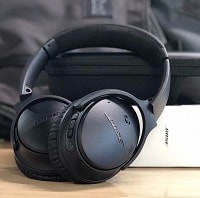 The ear-cup rotation goes together with the clamping force, with respect to the compliance to the natural contours of faces and distributing uniform pressure. Headphones are available with varying degrees of this kind of movement- both lateral and vertical. Attention must be paid to the design of the product.
The ear-cup rotation goes together with the clamping force, with respect to the compliance to the natural contours of faces and distributing uniform pressure. Headphones are available with varying degrees of this kind of movement- both lateral and vertical. Attention must be paid to the design of the product.
It is worth noting that headphones with wholly fixed ear cups offer the smallest amount of movement. If the apex or frontage sides of ear cushions are pressing against one’s head than the bottom, there’s very little that be done.
Ear cups with a liberal range of lateral motion are able to instantaneously fine-tune to front and back. There are headphones posses ear cups with the capability to go around vertically due to a hinged design. The vertical association helps to make sure the cushions are pressing comfortably and evenly around the tops and bottoms of your ears.
While purchasing for headphones, pick one that has considerable freedom of movement. Such designs facilitate maintaining a clamping force that doesn’t center on definite areas of skin that can cause uneasiness, exhaustion, or tenderness.
Bear in mind that headphones with fixed ear cups can be still comfy to put on. Those with stretchy headbands are capable of providing the preferred mobility. In the end, one should wear ear cups that feel natural and comfortable as they maintain rigid yet uniform contact against one’s head.
Size & Depth of the Ear Cups
The deepness and dimension of ear cups do matter. If over-ear cups and cushions are shallow, then your ears would pat or rub up against the insides. Characteristically, headphone makers place only an emaciated fabric over the metal or plastic that contains the drivers.
The dimension and outline of over-ear cups can be just as significant. Even spongy leather cushions can begin to feel rasping over time through continuous friction by the movement of one’s head. Those with additional piercings can be subject to experiencing bigger nuisance from diminutive-sized ear cups.
The over-ear cups or cushions come in three shapes: circle, oval, and D.
- Amongst which round cups/cushions are the easiest to compact with. They generally tender plentiful room, and angling the headphones is not troublesome.
- Oval and D-shaped cups/cushions have a tendency to be trickier and more exacting. They may not at all time line up with the bearing of ears.
Clamping Force
The clamping force determines the extent to which headphones will snug up alongside one’s face. A visual assessment won’t amount to much as the only way to gauge the efficiency would be to actually wear them. It shows you where the pressure lies.
If the force exceeds, one might experience severe difficulties. If the clamping force is too small, the headphones are prone to fall off with the least bob or turn of the head.
Preferably, you want to choose headphones that deliver an even amount of clamping force throughout all contact made by the ear pads. Some headphones tend to be stiff right off the retail packaging. They might require some time duration to stretch out. Manually stretching them out will quicken up the process.
Padding
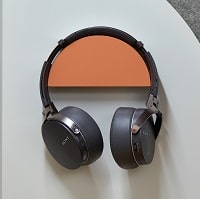 Finally, one will want to think about the measure and magnitude of cushioning on both the ear cups and the headband. For over-ear headphones, the outline and dimension of pads on the cups add to general deepness and room accessible for ears. Thin cushions leave diminutive room to keep ears from stirring the hardware, and they will also feel less plush up against the head.
Finally, one will want to think about the measure and magnitude of cushioning on both the ear cups and the headband. For over-ear headphones, the outline and dimension of pads on the cups add to general deepness and room accessible for ears. Thin cushions leave diminutive room to keep ears from stirring the hardware, and they will also feel less plush up against the head.
Thicker ones are unquestionably more comfortable, although they could place a tad clutch around your ears. For on-ear headphones, the quantity of cushioning is normally directionally-proportional to ease. Either way, wearing the headphones is the only way one would actually figure out.
The kind of cushioning substance makes a momentous difference. Memory foam is universally used for its springiness and breathability. Not all memory foam is fashioned equally- they can be made in a variety of compactness.
The typical everyday foam offers not as much support and tends to compress down with the passage of time. Despite the fact that this type of foam may be conveniently used within headbands, it’s best to steer clear of them for ear cushions as it simply doesn’t hitch. Although nearly every headbands slot in some kind of foam beneath a polyester fabric, nylon mesh, etc there are headphones that leave out it out completely.
Real headband padding tends to be less imperative with lighter headphones. It’s the heavier headphones (characteristically the bigger over-ears) that you’ll want to pay more consideration to. There is an understood corresponding act between clamping force and headband cushioning. Additional clamping force holding the headphones in place usually means less weight will stand straight along on your head, eradicating the want for thicker cushioning.
The overturn of that also holds accurate. But when in distrust, opt for the one with the denser foam. Just ensure that there is adequate padding to make inclusive contact with your head.




